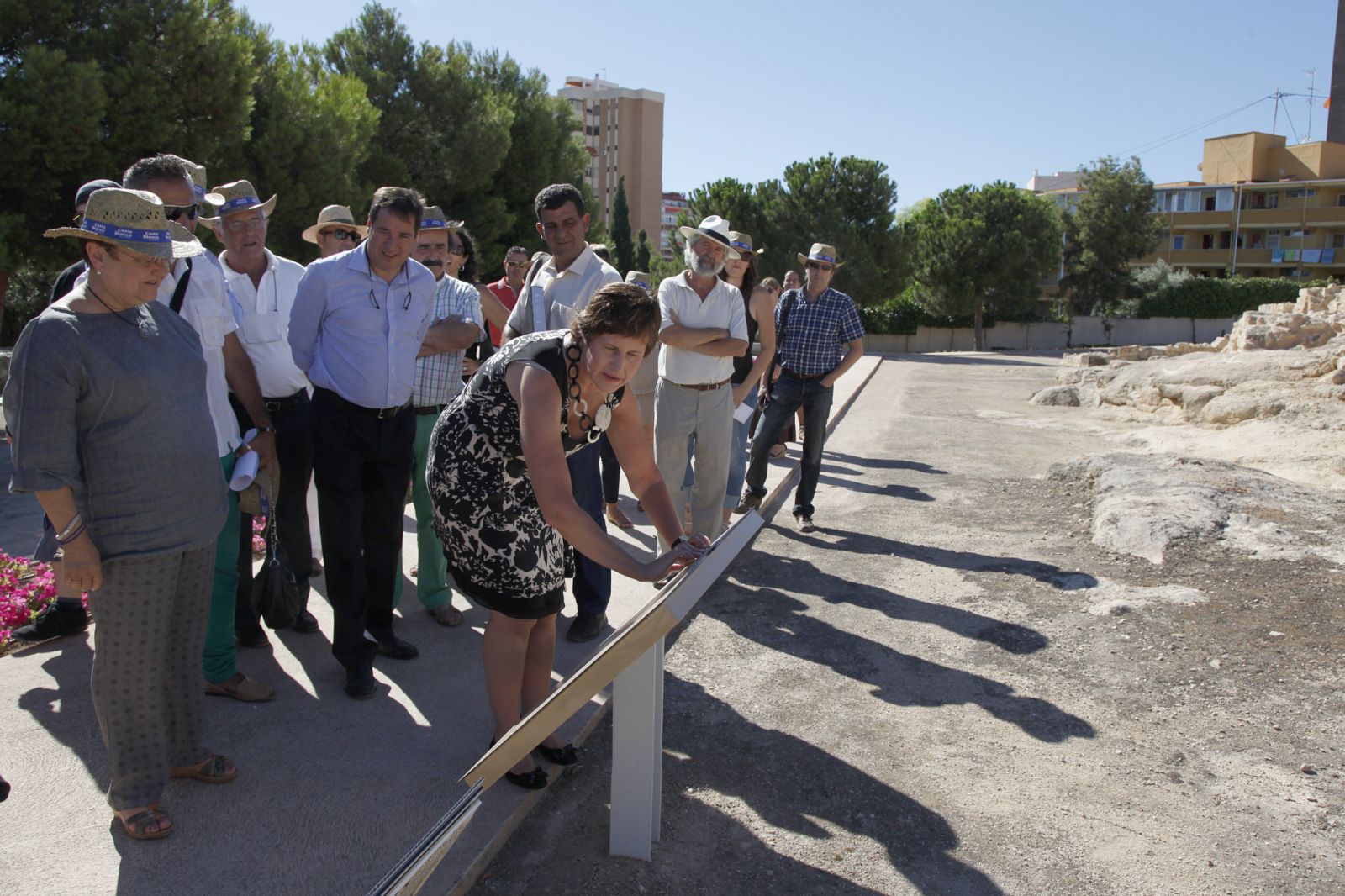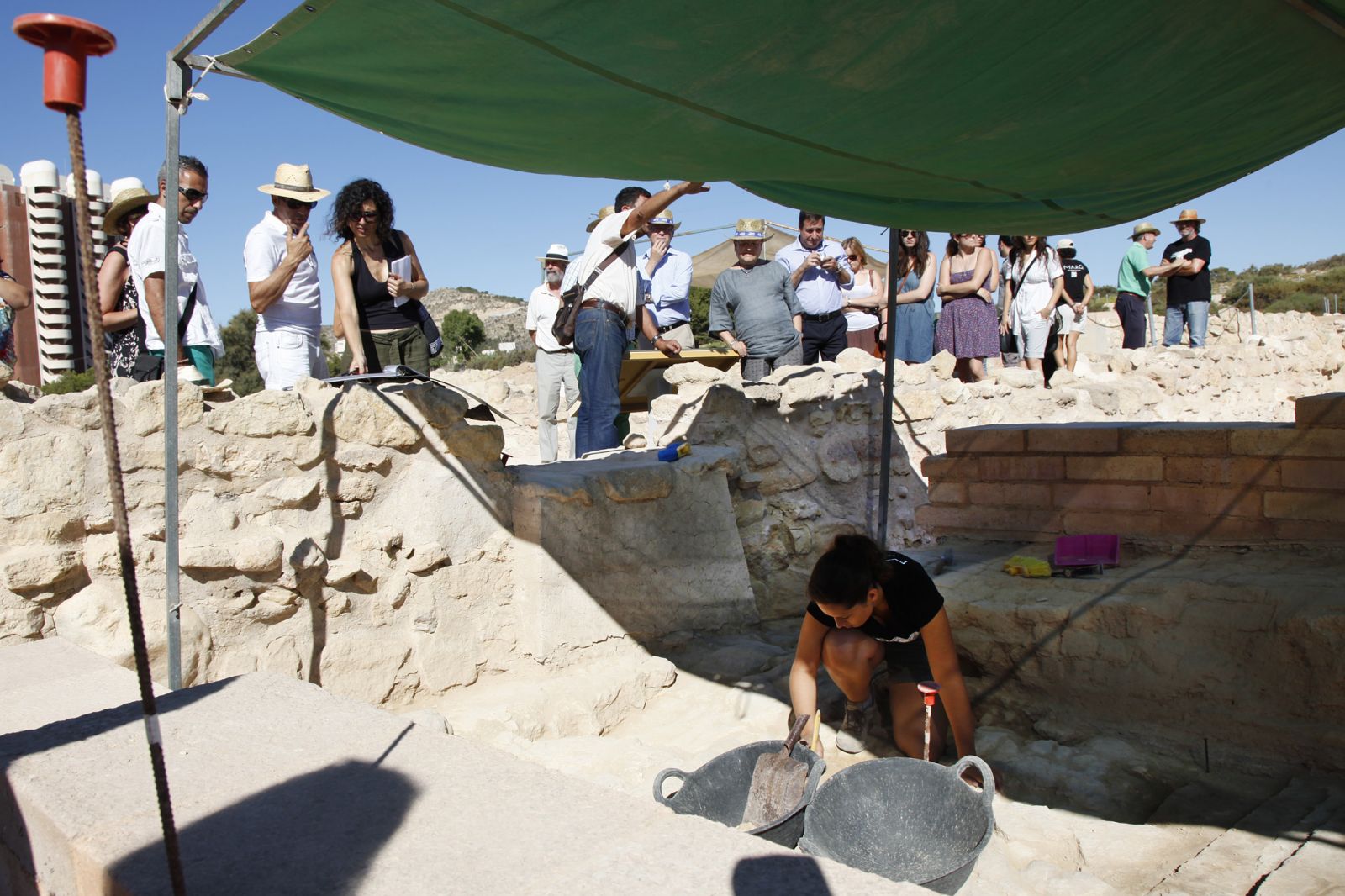The President of the Alicante Provincial Council Luisa Pastor has presented in the Tossal de Manisesin Lucentum, the new information panels These posters have been updated and brought up to date with the latest research data. These posters, a total of 27The main novelty is that they incorporate as the main novelty texts in English -previously they were in Spanish and Valencian-. and in Braille. This latest action, which shows the provincial institution's interest in accessibility, will enable the provincial authorities to blind people to get to know the contents of the archaeological park in a simple way.

The event was also attended by the deputies for Culture and Architecture, Juan Bautista Roselló and Manuel Moyarespectively, the director of the ONCE Educational Resource Centre, the director of the ONCE Educational Resource Centre, the director of the ONCE Educational Resource Centre, the director of the ONCE Educational Resource Centre Cristina Pérez Sánchezthe site's Conservation Director Rafael Pérezthe technical director of MARQ Manuel Olcina.
The new panels also include a series of QR codes The proposal is based on a series of interactive maps that offer the visitor the possibility of further information about them. allowsby taking a photograph with a mobile device equipped with a specific application, link to the museum's website and consult specific details of each of the posters. In this way, the citizen has access to images, texts, drawings and complementary videos that are continuously updated.
Pastor highlighted the importance of this initiative, which has included, among other actions, the revision and updating of texts, images, plans and drawings, the inclusion of information in English and Braille and the use of QR codes so that visitors can find out more about the site via the Internet..
In addition, there have been changed the brackets of the posters, the updating your images -plans and drawings - based on the latest archaeological data available, and have been coloured and added new settings. In the future, the Alicante museum also plans to, include audio files on the panels to turn them into a kind of audio guide.
With regard to the accessibility project developed, the ONCE representative highlighted the important effort made by the MARQ in this area since its foundation more than ten years ago. Among the actions we have carried out jointly, we can highlight the adaptation of exhibitions, the training of museum staff to be able to attend to people with disabilities or the creation of guides aimed not only at blind people but also at those with other disabilities.said Cristina Pérez.
During the visit, Pastor was also able to get to know the evolution of the summer archaeological excavation campaign that MARQ is currently carrying out in the Tossal de Manises. A total of 22 students from the University of Alicante and the UNED of Elche are taking part in this project, which began last year. 27 June and which has already made it possible to demonstrate chronologically that the city was founded during the second half of the 3rd century BC.The Carthaginians, most probably by the Carthaginians and, in particular, by order of a member of the Barca family.
The archaeologists working in the area have also been able to confirm that the most important infrastructures of this city -walls, street patterns and cisterns rose in unisonThis gives a clear idea of prior planning and design. In addition, the following have been documented new traces of the destruction of this city which undoubtedly took place in the the last years of the Second Punic War.
It was probably due to a Roman military action at a time very close to the conquest of the Carthaginian capital of the Iberian Peninsula: Carthago Nova, in 209 BC, explained Manuel Olcina.
MARQ excavation campaigns
The excavation programme carried out by the Alicante Provincial Council through the MARQ during the 2013 summer period is completed with campaigns at other archaeological sites in the province such as the medieval Pobla de Ifach o the slopes of the Castle of Callosa de Segura.
In this respect, the President pointed out that these actions make it possible to bringing new sites and discovering new structures to the publicas well as to advance in the research and enhancement of the cultural and historical heritage of the province.

